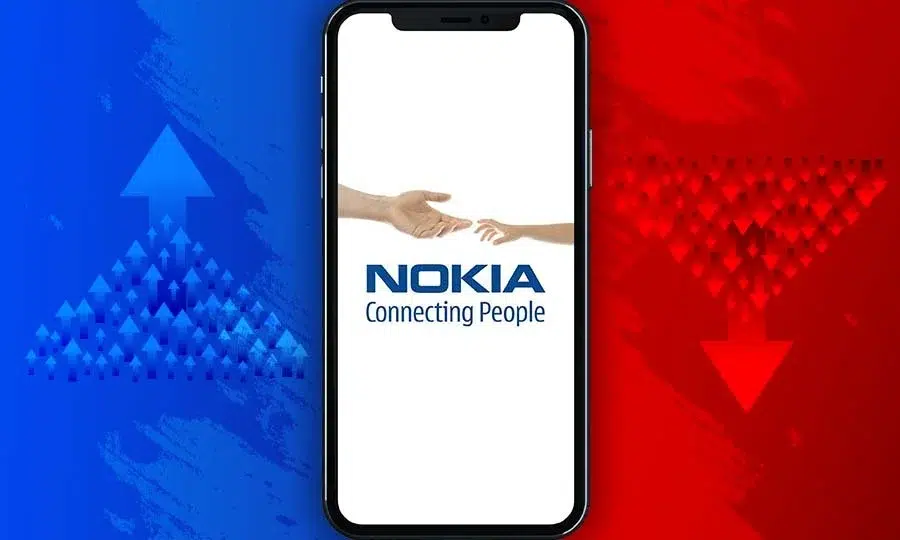When you hear the name Nokia, many people instantly think of sturdy mobile phones that could survive almost anything — the kind you could drop from a height, play the famous Snake game on, and charge once to last for days. But Nokia is much more than just a nostalgic memory. It’s a company with a rich history, a major role in telecommunications, and a constant drive to innovate. In this article, we’ll explore Nokia’s origins, rise, challenges, reinvention, and current standing in the technology world.

1. The Early Years of Nokia
Nokia’s story begins in 1865 in Finland — not in a tech lab, but in a paper mill. Founded by Fredrik Idestam along the banks of the Nokianvirta River, the company initially produced paper products. Over time, Nokia expanded into different industries, including rubber boots, tires, and cables.
By the mid-20th century, Nokia was already experimenting with telecommunications equipment, which set the stage for its future dominance in the mobile phone market.
2. Nokia’s Rise to Global Mobile Phone Leader
Nokia’s entry into mobile communications started in the 1980s with the first car phones and portable mobile devices. However, it was in the 1990s and early 2000s that Nokia became a global household name.
Some key milestones include:
- 1992: Launch of the Nokia 1011 — the first mass-produced GSM phone.
- 1997: Introduction of the iconic Nokia 6110, featuring the Snake game.
- 1999: Launch of the Nokia 3210 — one of the best-selling phones in history.
- 2003: The Nokia 1100 became the world’s best-selling mobile phone of all time, with over 250 million units sold.
Nokia was known for:
- Durability: Phones were almost indestructible.
- Battery Life: Lasting several days on a single charge.
- User-Friendly Design: Simple menus and physical keypads.
- Innovative Features: Early adoption of polyphonic ringtones, built-in cameras, and color screens.
By 2007, Nokia controlled over 40% of the global mobile phone market, making it the undisputed leader.

3. The Fall from the Top
Nokia’s downfall began in the late 2000s, and it’s a classic example in the business world of how even the strongest companies can lose dominance.
Main reasons for decline:
- The Rise of Smartphones: Apple’s iPhone (2007) and Google’s Android platform transformed the industry from button-based phones to touchscreen devices.
- Slow to Adapt: Nokia stuck with its Symbian OS for too long instead of quickly embracing more advanced smartphone operating systems.
- Fragmented Strategy: The company released too many models without a unified vision.
- Strong Competition: Brands like Samsung, HTC, and later Xiaomi and Huawei, quickly adapted to changing consumer needs.
By 2013, Nokia’s mobile division was struggling, and Microsoft acquired it for $7.2 billion to produce Windows Phones — a move that didn’t revive its market share.
4. Reinvention and New Business Focus
After exiting the mobile phone market, Nokia shifted its focus to telecommunication networks and infrastructure. It became a major supplier of:
- 5G network technology
- Internet of Things (IoT) solutions
- Cloud and software-based networking
- Advanced communication equipment for enterprises and governments
In 2016, Nokia made a comeback in mobile devices by licensing its brand to HMD Global, a Finnish company. HMD began producing Android-powered Nokia smartphones, bringing the classic brand back to consumers while keeping up with modern smartphone features.

5. Modern Nokia Smartphones
Today’s Nokia smartphones focus on:
- Pure Android Experience: No heavy custom skins, regular security updates.
- Durability: Continuing the tradition of strong build quality.
- Affordable Pricing: Targeting mid-range and budget-conscious buyers.
- Sustainability: Some models use recycled materials and eco-friendly packaging.
Popular modern Nokia models include:
- Nokia G-series (budget smartphones)
- Nokia X-series (mid-range devices with 5G support)
- Nokia C-series (affordable entry-level phones)
6. Nokia’s Role in 5G and Future Technologies
Nokia is now one of the leading global 5G providers, competing with Ericsson, Huawei, and Samsung. It provides infrastructure for telecom companies worldwide, helping enable faster internet, smart cities, autonomous vehicles, and next-generation connectivity.
It is also investing in:
- Virtual Reality (VR) and Augmented Reality (AR)
- AI-powered network management
- Satellite and space communications
- Enterprise private networks
7. Why People Still Love Nokia
Even though Nokia no longer dominates mobile phone sales like it did two decades ago, it remains one of the most trusted and respected technology brands.
People still admire Nokia for:
- Reliability and durability of its products.
- Strong commitment to quality.
- A history of innovation.
- Nostalgia — many people’s first phone was a Nokia.

8. Conclusion
Nokia’s journey is a fascinating story of innovation, dominance, decline, and reinvention. From humble beginnings as a paper mill to becoming the king of mobile phones, and now a global leader in telecom infrastructure, Nokia has shown that adaptability is key in the tech world.
In today’s fast-paced market, Nokia might not be the biggest smartphone brand, but it’s definitely one of the most respected, with a strong foothold in future technologies like 5G and IoT. If history has taught us anything, it’s that Nokia still has the power to surprise us.


 Watch
Watch
 CASUAL WEAR
CASUAL WEAR


[…] tablets, wearables, smart TVs, cars, and IoT devices. With growing interest around HyperOS 3, Xiaomi HyperOS 3 update, and future Xiaomi software strategy, users are eager to understand what truly sets […]